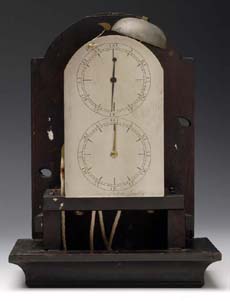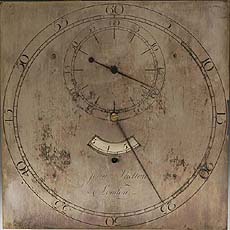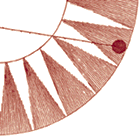Timing was crucial to observing the transits. Edmond Halley’s method required the recording of Venus’ two moments of “internal contact” with the Sun.
.
The official British expeditions of 1769 were supplied with clocks made by John Shelton, like the two shown here. Each has dials for minutes and seconds. Unlike domestic timekeepers the display of the hours was relatively unimportant.
.
The larger clock, known as a regulator, was the principal timekeeper. It was kept undisturbed in its own tent or enclosure and its rate checked against the motions of the stars.
.
The smaller journeyman clock was a secondary timepiece, installed alongside the observatory instruments. The example below has lost its original hood, allowing the movement to be seen.
.
 |
 |





